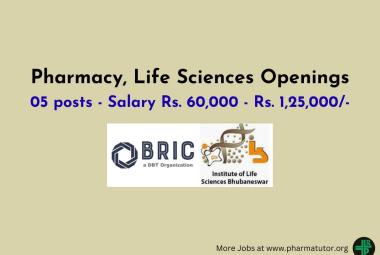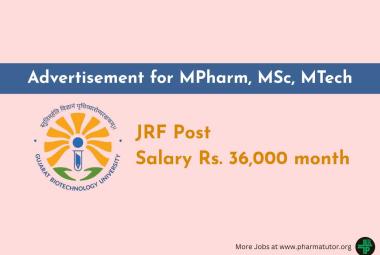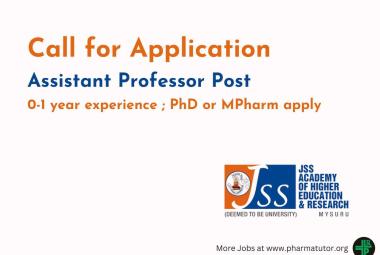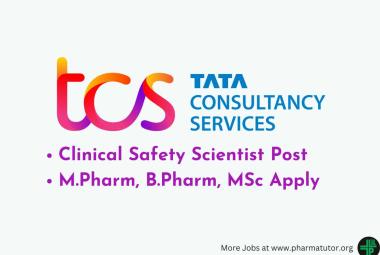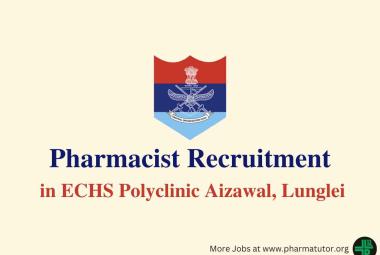About Authors:
Nishant kumar gupta, *Aadesh kumar
Dept. of pharmacy BIT meerut
*adesh.adi.chaudhary@gmail.com
Abstract:
There was a point in time when packaging in pharmaceutical industry is symbolized for substantial safeguard, for identification and for merely endowing with a piece of information to any person who agree to it. But the changing scenario has been conveyed an assortment of changes, as in this day and age packaging provides the prevention of product tampering and counterfeiting, the assurance of product dispensing accuracy, child protection and the promotion of patient compliance with product dosage schedules. In the precedent time we used packaging materials, labels, holograms and some introductory communications; but these days together with them we use mobile applications, an innovative and creative unit, altering labeling standards, luxurious packaging, a packaging development team, anti-counterfeiting packaging extravaganza, hi-tech module for packaging demonstrate and an intelligent outlook. Packaging schoolwork has such an individual place in the market of counterfeit or fake drugs as nowhere. Packaging developer has an only effort to engender a special design that can competent with both fake brands and generic brand of that drug with ‘Me-too’ names.
[adsense:336x280:8701650588]
Reference Id: PHARMATUTOR-ART-1415
Introduction:
Packaging can be defined as an economical means of providing presentation, protection, identification information, containment, convenience and compliance for a product during storage, carriage, display and until the product is consumed. Packaging must provide protection against climatic conditions biological, physical and chemical hazards and must be economical. The package must ensure adequate stability of the product throughout the shelf life.[1]
The external image of the package must not only compliment product confidence, but provide clear and concise product identification and other features included are:
Package should provide adequate information related to the contents including legal requirements, route of administration, storage conditions, batch number, expiry date, manufacture’s name and address and product license number. Package should assist in patient compliance. Package should preferably have an aesthetically acceptable design.[2]
[adsense:468x15:2204050025]
|
Types of primary and secondary packaging material |
||
|
Material |
Type |
Example of use |
|
Glass |
Primary |
Metric medical bottle, ampoule, vial, syrups, jars |
|
Plastic |
Primary |
Ampoule, vial, infusion fluid container, dropper bottle, syrups bottle, |
|
|
Secondary |
Wrapper to contain primary pack |
|
Cardboard |
Secondary |
Box to contain primary pack, |
|
Paper |
Secondary |
Labels, patient information leaflet, tablets packaging |
(Table 1: Types and example of primary and secondary material of packaging)
Qualification and Quality Control of Packaging Components:
A packaging system found acceptable for one drug product is not automatically assumed to be appropriate for another. Each application should contain enough information to show that each proposed container closure system and its components are suitable for its intended use. The type and extent of information that should be provided in an application will depend on the dosage form and the route of administration. For example, the kind of information that should be provided about a packaging system for an injectable dosage form or a drug product for inhalation is often more detailed than that which should be provided about a packaging system for a solid oral dosage form. More detailed information usually should be provided for a liquid-based dosage form than for a powder or a solid, since a liquid-based dosage form is more likely to interact with the packaging components. [3]
Examples of Packaging Concerns for Common Classes of Drug Products:
|
Degree of Concern Associated with the Route of Administration |
Likelihood of Packaging Component-Dosage Form Interaction |
||
|
|
High |
Medium |
Low |
|
Highest |
Inhalation Aerosols and Solutions; Injections and Indictable Suspensions |
Sterile powders and Powders for Injection; Inhalation Powders |
|
|
High |
Ophthalmic Solutions and Suspensions; Transdermal Ointments and Patches; Nasal Aerosols and Sprays |
|
|
|
Low |
Topical Solutions and Suspensions; Topical and Lingual Aerosols; Oral Solutions and Suspensions |
Topical powders Oral powders |
Oral Tablets and Oral (Hard and Soft Gelatin) Capsules |
(Table 2: Type of concern related with several sort of packaging)
Protection:
A container intended to provide protection from light or offered as a light-resistant container must meet the requirements of the USP<661> Light Transmission test. The procedure requires the use of a spectrophotometer, with the required sensitivity and accuracy, adapted for measuring the amount of light transmitted by the plastic materials used for the container. The ability of a container closure system to protect against moisture can be ascertained by performing the USP <661> Water Vapor Permeation test°. The USP sets limits to the amount of moisture that can penetrate based upon size and composition of the plastic components (HDPE, LDPE, or PET).[5] The integrity of the container can be evaluated in several ways. A couple of the most common tests are dye penetration and microbial ingress. Container closure systems stored in a dye solution and exposed to pressure and vacuum cycles are examined for dye leakage into the container. The microbial ingress is similar in fashion, but determines the microbial contamination of the contents when soaked in a media contaminated with bacteria. Other quantitative tests that can be run are vacuum/ pressure decay, helium mass spectrometry, and gas detection.
Compatibility:
Components compatible with a dosage form will not interact sufficiently to change the quality of the product or its components. A leachability study designed to evaluate the amount and/or nature of any chemical migrating from the plastic material to the pharmaceutical product should be implemented. The study should evaluate substances that migrate into the pharmaceutical product vehicle for the length of shelf-life claim. The drug product should be evaluated at regular intervals, such as at one, three, or six months or at one or two years, until the length of the shelf life claim has been met.
Analytical techniques such as Liquid Chromatography/ Mass Spectrometry to evaluate nonvolatile organics, Gas Chromatography/Mass Spectrometry (GC/MS) to evaluate semi volatile organics, and Inductively Coupled Plasma (ICP) spectroscopy to detect and quantitate inorganic elements should be a part of this study. Coupling MS to LC and GC methods provides a definitive and effective tool for identifying unknown impurities and degradation products. [14]
NOW YOU CAN ALSO PUBLISH YOUR ARTICLE ONLINE.
SUBMIT YOUR ARTICLE/PROJECT AT articles@pharmatutor.org
Subscribe to PharmaTutor Alerts by Email
FIND OUT MORE ARTICLES AT OUR DATABASE
Safety:
All packaging components should be constructed of materials that will not leach harmful or undesirable amounts of substances to which a patient will be exposed during drug treatment. Determining the safety of a packaging component is not a simple process, and a standardized approach has not been established.
The USP includes physicochemical tests for plastics based on water extracts; while water, alcohol, and hexane extracts are required for polyethylene containers under controlled temperature and time parameters (700C for 24 hours for water and alcohol and 50°C for 24 hours for hexane). These tests are particularly useful in defining materials as rich or poor in extractable chemicals. The tests categorize material extracts in general terms, such as nonvolatile residue (total extractables), residue on ignition, buffering capacity, heavy-metals content, and turbidity.
Biological reactivity is the second part of safety testing and is designed to test extractable chemicals for toxicological properties. FDA's guidance document suggests that the USP biological reactivity tests can determine the safe level of exposure via the label-specified route of administration. [15]
Performance:
The fourth attribute of suitability of the container closure system, performance and drug delivery, refers to its ability to function in the manner for which it was designed. There are two major considerations when evaluating performance. The first consideration is functionality that may be to improve patient compliance, minimize waste, or improve ease of use. The second consideration is drug delivery, which is the ability of the packaging system to deliver the right amount or rate.
Typical Suitability Considerations for Common Classes of Drug Products: [4] [5]
|
ROUTE OF ADMINISTRATION/ DOSAGE FORM |
SUITABILITY |
|||
|
Protection |
Compatibility |
Safety |
Performance/ Drug Delivery |
|
|
Inhalation Aerosols and Solutions, Nasal Sprays |
L, S, M, W, G |
Case 1 c |
Case 1 s |
Case 1 d |
|
Inhalation Powders |
L, W, M |
Case 3c |
Case 5s |
Case 1d |
|
injections, Indictable Suspensions |
L, S, M, G |
Case 1 c |
Case 2s |
Case 2d |
|
Sterile Powders and Powders for Injection |
L, M, W |
Case 2c |
Case 2s |
Case 2d |
|
Ophthalmic Solutions and Suspensions |
L, S, M, G |
Case 1 c |
Case 2s |
Case 2d |
|
Topical Delivery Systems |
L, S |
Case 1 c |
Case 3s |
Case I d |
|
Topical Solutions and Suspensions, and Topical and Lingual Aerosols |
Case 3s |
L, S, M |
Case 1c |
Case 2d |
|
Topical Powders |
L, M, W |
Case 3c |
Case 4s |
Case 3d |
|
Oral Solutions and Suspensions |
L, S, M |
Case 1c |
Case 3s |
Case 2d |
|
Oral Powders |
L, W |
Case 2c |
Case 3s |
Case 3d |
|
Oral Tablets and Oral (Hard and soft Gelatin ) Capsule |
L, W |
Case 3c |
Case 4s |
Case 3d |
(Table 3: Table for typical suitability considerations for common classes of drug products)
Abbreviations for Table 3 Explanation of the codes in the table:
Protection:
- L (protects from light, if appropriate)
- S (protects from solvent loss/leakage)
- M(protects sterile products or those with microbial limits from microbial contamination)
- W(protects from water vapor, if appropriate)
- G (protects from reactive gases, if appropriate)
Compatibility:
- Case 1c: Liquid-based dosage form that conceivably could interact with its container closure system components
- Case 2c: Solid dosage form until reconstituted; greatest chance for interacting with its container closure system components occurs after it is reconstituted.
- Case 3c: Solid dosage form with low likelihood of interacting with its container closure system components.
Safety:
- Case 1s: Indicates theUSP Biological Reactivity Test data, extraction /toxicological evaluation, limits on extractable, and batch-to-batch monitoring of extractable.
- Case 2s:Indicates the USP Biological Reactivity Test data and possibly extraction/toxicological evaluation.
- Case 3s:Indicates an appropriate reference to the indirect food additive regulations is sufficient for drug products with aqueous-based solvents. Drug products with non-aqueous based solvent systems or aqueous based systems containing co-solvents generally require additional suitability information
- Case 4s: Indicates an appropriate reference to the indirect food additive regulations is sufficient.
- Case 5s:Indicates an appropriate reference to the indirect food additive regulations for all components except the mouthpiece for which USP Biological Reactivity Test data is provided.
Performance:
- Case Id: Frequently a consideration.
- Case 2d: May be a consideration.
- Case 3d: Rarely a consideration
Market of counterfeit drugs:
World Health Organization (WHO), up to 30% of drugs sold in developing nations is branded drugs which are counterfeited. The fake drug market is estimated at $200 billion by the World Customs Organization (WCO). The number of deaths and drug resistance levels continue to rise due to consumption of fake drugs, which is creating a healthcare nightmare, and more so in developing countries.[31]
Closer home, estimates place the fake drug industry at15-20%of the 40,000 crore Indian pharmaceutical industry.What was once confined to exotic and costly pills like Viagra has now proliferated to cough syrups, vitamin supplements, painkillers and the like? India, being the world’s largest supplier of generic drugs, has become an epicenter for counterfeit and fake drugs. [25]
Geographical distribution of global pharmaceutical sales, [26]
|
Continent’s name |
Percentage (%) |
|
North America |
45 |
|
Europe |
35 |
|
Asia, Africa and Australia |
8 |
|
Japan |
7 |
|
Latin America |
5 |
(Table 4: That data is published by ‘UN office on Drugs and Crime: Globalization Of Crime: A transnational organized crime threat assessment’.)
Geographic distribution of counterfeit incident, 2009 [27]
|
Continent’s name |
Percentage (%) |
|
Asia |
35 |
|
Latin America |
25 |
|
Europe |
15 |
|
North America |
10 |
|
Eurasia |
8 |
|
Near East |
4 |
|
Africa |
3 |
(Table 5: Tabulated format of the report published by Pharmaceutical Security Institute)
Market Flooding With Dangerous Counterfeit Drugs:
Not everyone knows that misspelled spam advertising painkillers and Viagra isn’t to be trusted of prescription medicines in Europe has come up with some concerning results about the massive amounts of dangerous counterfeit drugs moving through the internet. And most worrying of all, those drugs are even starting to show up in legitimate pharmacies. [48]
List of some counterfeit medicine in the market [28]
|
Counterfeit medicine |
Country/Year
|
Report
|
|
Alprazolam (anti-anxiety drug) |
Canada/2007 |
Pills found with high levels of aluminum, titanium, arsenic, and other metals (led to Canada's first casualty on fake drugs) |
|
Xenical(obesity medication) |
United state/2007 |
Contained no active ingredient and sold via Internet sites operated outside of the United States |
|
Cavinton(cardiovascular condition and cerebral insufficiency) |
Russia/2006 |
Medication included foreign substances. About 600 boxes of false Cavinton discovered in warehouse |
|
Zyprex (bipolar disorder and schizophrenia) |
United Kingdom/2006 |
Detected in the legal supply chain; lacked sufficient active ingredient |
|
Nandrolone(treats osteoperosis and aplastic anaemias) |
Spain/2004 |
Drugs had inadequate amounts of active ingredients. Discovery led to the largest counterfeit drug bust in Spain's history. |
|
Cialis (erectile dysfunction) |
Singapore/2004 |
Pills included active ingredients, but also consisted of varying amounts of other medication (sildenafil) to compensate potency. |
(Table 6: List of some counterfeit drugs published by Thealternative.in)
By International Journal of Clinical Practice, Editor Dr. Graham Jackson found that criminals are using the internet to traffic in an ever increasing market for illegal drugs that rarely contain the active ingredients of their legitimate counterparts. The review estimates that counterfeit drug trafficking on the internet doubled between 2005 and 2010, totaling more than $75 billion worldwide. [30]
An analysis of 2,383 seized ‘Viagra’ samples carried out by Pfizer found that only 14% were authentic. [3I]
A UK study of 96 websites selling painkillers, found that 48% sold drugs that should be only supplied on prescription and 76% of those did so without a prescription. And a US study of 159 sites offering controlled drugs found that 85% did not require a prescription. [31]
21% of the 14,000 plus people who took part in a 14-country European study had bought prescription only medicines without a prescription. The figure was 12% in the UK. [50]
The UK medical newspaper GP reported that 33% of the 423 doctors it surveyed said that they had treated, or suspect they had treated, a patient for the side-effects of substandard prescription only drugs purchased online. [31]
The UK has had nine product recalls in the last three years after counterfeit medicines reached pharmacy and patient levels and a further five were discovered at wholesaler level. [31]
In 2010 FDA Commissioner Dr. Margaret Ann Hamburg said in a speech that it was shocking that in some parts of the world between 30 to 50 percent of the drugs used to treat serious diseases are counterfeit. [32]
NOW YOU CAN ALSO PUBLISH YOUR ARTICLE ONLINE.
SUBMIT YOUR ARTICLE/PROJECT AT articles@pharmatutor.org
Subscribe to PharmaTutor Alerts by Email
FIND OUT MORE ARTICLES AT OUR DATABASE
Counterfeit Drugs and pharmaceutical Packaging:
Actually, the differences among the versions of drug are extremely small. FDA calculated the average difference in bioavailability between brand-name drugs and their generic copies to be only 3.5 percent- no greater than the difference between one batch of a brand-name drug and another batch off the same assembly line. So far, about 5000 generics have been approved as a bioequivalent to brand name products. Although the FDA states that it is not aware of a single documented case in which any of these 5000 generics has caused a treatment problem. But the real problem begins when we explode the name and packaging style of these 5000 generic brand of same drugs. [25]. They are actually matched with a very small number of branded drugs. Some time, it shows a difference of single letter in its name or some time has a mirror image of packaging, so that a chemist can easily substitute one brand for another. It can create a treatment problem in the case of digoxin, lanoxin, levothyroxin, warfarin and pantazocin as they all are potent drugs. [25]
31,000 new products were introduced by packaged goods companies last year (2011) in India alone.
Increasingly, companies need to differentiate their products to create consumer perceptions of a “product’s relative advantage” attract first time sales (it has been estimated by Point-Of-Purchase Advertising International that 72% of shoppers decide to buy something at the Point-Of- Purchase) and in phama industry our consumer is well educated and intelligent; and generate repeat purchases.
Carefully planned and well-executed package design is one part of the promotion mix that can affect consumer perceptions of tangible and intangible product attributes and benefits that result in positive consumer response. While doing this, the package must perform a number of other functions. This paper presents the “Packaging Matrix”, a simple tool that allows companies to consider the whole host of functions that a package must accomplish in different environments. It is a template of the criteria to consider for effective package design or reformulation. [16][17][18][19]
Traceable Solutions for Medical Packaging:
The demand for safety and integrity in the area of medical packaging has taken on new and significant implications in the past two or three years. Child safety, correct dosage, patient traceability, tampering and diversion of pharmaceuticals are always an area of concern, medical packaging. Now, major additional concerns of drug counterfeiting and concerns around terrorism bring a new sense of urgency to medical packaging manufacturers and hospitals, clinics, assisted living facilities, doctors' offices and, the individual consumer.
Advantages:
Traceable packaging can address many safety as well as business concerns. In an ideal packaging environment, with full traceability from process to patient (or consumer) these concerns can be addressed:
- Fraudulent Products- Drug counterfeiting is a problem that must be addressed. Internet drug sales contribute to this issue. The World Health Organization estimates that fraudulent drugs generate $32 billion dollars in annual earnings for drug counterfeiters.
- Expired Products- Medicines sold as fresh after their expiration dates is a problem easily addressed if traceable packaging is implemented.
- Diverted Products- Again, a system of traceable packaging can keep track of pharmaceutical product locations in the complex distribution system.
If we look at a few concerns within clinical, hospital or assisted living settings there are several issues addressed through traceability. For example:
- The wrong medicine to the wrong patient- In an assisted living facility it is estimated that approximately 44 percent of the patients require seven or more medications per day. With the level of medications dispensed in hospitals and clinics on a daily basis, making sure the correct medicine goes to the correct patient every time is a critical issue.
- Incorrect Dose- The issues are obvious here and traceability, where the dosage is one of the identified properties, is a solution.
- Drug Incompatibility- Being aware of other medications taken by patients, or conditions like food requirements are concerns that can be addressed to some extent by traceable packaging.
These are just a few of the areas where packaging traceability can add value from a business perspective:
- Supply Chain Management- The ability to track inventories, ensure proper supplies, and improve inventory management are all benefits, particularly as RFID packaging becomes available at the individual bag level.
- Inventory Control- A key part of supply chain management, tracking inventory throughout the cycle, will result in definite cost saving realizations.
- Drug Recalls- The ability to better manage drug recalls is a benefit not only to the manufacturer but to the government as well. Traceability will ease this complex process.
While we have pointed out a few of the concerns and the accompanying benefits that traceable packaging can provide to the medical packaging industry and the consumer, there are many steps yet to be taken.
CHANGING LABELLING STANDARDS:
Companies which have had to take on more responsibility for medical labeling in recent times with pharmaceutical companies expecting label suppliers to make sure that there are no problems.
PS 9000covers pharmaceutical packaging that is not in direct contact with medicines, and labels on bottles and cartons. Printers must follow the rules of the Pharmaceutical Quality Group (PQG), which stipulates the key quality standard in this area – PS 9000. This sits alongside other general quality standards such as ISO 9000 and ISO 9008.
PS 9000 covers pharmaceutical packaging that is not in direct contact with medicines, and labels on bottles and cartons. It was produced in 2000, but a new version is being drafted and is expected to be ready early in 2011.
The standard went through a major upgrade shortly after its inception, expanded from just over 50 pages to almost 200, to cover all aspects of the process, right through to the end customer. But changes in security technology mean that it is now out of date. The updated version will include new security features and change control – how to manage when, for example, a new piece of equipment has been installed. Areas such as counterfeit prevention, barcoding and dot matrix codes will also be covered, as will the need for quirky designs on labels that are hard to copy
Topical behavior in packaging technology to bring to a standstill an assortment of foul activities:
Coding in pharmaceutical packaging:
(A)Technology of barcodes:
A linear barcode is a binary code (1s and 0s). The lines and spaces are of varying thickness and printed in different combinations. To be scanned, there must be accurate printing and adequate contrast between the bars and spaces. Scanners employ various technologies to "read" codes. The two most common forms are lasers and cameras. Scanners maybe fixed position, like most supermarket checkout scanners, or hand-held devices, often used for the taking of inventories. There should be (but typically is not) a distinction drawn between the code, which is a structure for the conveyance of data, and the symbol, the machine-readable representation of the code: The code is text, which can be translated into a multiplicity of languages - English; French, Japanese, symbol. [6] [7]
(B)The Universal Product Code:
The Universal Product Code or UPC is unique because it was developed by the user community. Most technological innovations are first invented and then a need is found for the invention. The UPC is a response to a business need first identified by the US grocery industry in the early 1970s.
Coding and marketing have many functions in pharmaceutical packaging. They provide expiry dates for perishable products, lot and date codes to aid in tracing and recalls, bar codes, sales messages and other important information .A barcode (also bar code) is a machine readable representation of information in a visual format on a surface. Originally barcodes stored data in the widths and spacing of printed parallel lines, but today they also come in patterns of dots, concentric circles, and hidden in images. Barcodes can be read by optical scanners called barcode readers or scanned from an image by special software. Barcodes are widely used to implement Auto ID Data Capture (AIDC) systems that improve the speed and accuracy of computer data entry. While traditionally barcode encoding schemes represented only numbers, newer symbologies add new characters such as the uppercase alphabets. The drive to encode more information in combination with the space requirements of simple barcodes led to the development of matrix codeswhich do not consist of bars but rather a grid of square cells. Stacked barcodes are a compromise between true 2D barcodes and linear codes, and are formed by taking a traditional linear symbology and placing it in an envelope that allows multiple rows.[6][7][8]
ANVISA(A National Health Surveillance Agency) is the Brazilian National Health Surveillance Agency and was established in 1999. The law and the original ANVISA guidelines detailed a program of serialized code in 2-D Data Matrix format on a security label printed by the national mint that was to be rolled out in June 2010. [23]
Pharmaceutical noncompliance is a tremendous problem in the US, resulting in an estimated $100 billion expense every year while being blamed for the deaths of over 1,25,000 Americans annually (342 people every day). Ten percent of all hospital admissions are the result of pharmaceutical noncompliance and 23% of all nursing home admissions are as a result of people's inability to take their medications as prescribed. In February 2004, FDA published the final version of 21 CFR Parts 201, 606 and 610 to reduce the number of medication errors in hospitals and healthcare settings. The rule specifies that the packaging of all human drugs be labeled with a linear bar code containing the National Drug Code (NDC) number that serves as a universal product identifier. This 10 digit code identifies the labeler/vendor, product, trade package size, the specific strength, the dosage and the formula for a specific firm. [9][10]
According to the Healthcare Compliance Packaging Council (HCPC), the National Quality Forum (NQF) and FDA, the implementation of unit dose blister and strip packaging places a further restraint on the intentional or accidental misuse of pharmaceuticals. Furthermore, the European Union (EU) specifies that all prescription drugs dispensed directly to patients be in a unit dose packaging. FDA describes unit dose packaging as the only packaging format that can accommodate bar codes on packaging labels for each dosage of medication dispensed to patients. Coding and marking technologies for the primary packaging of pharmaceuticals must constantly evolve to meet the emerging industry trends and associated regulations. Bar coding methods have been traditionally chosen according to three main criteria: [11] [12]
- The kind of data required to appear on the bar code (numeric symbols, alpha-numeric or special characters).
- The amount of available space on which to print and the specific location of the bar code.
- Where the bar code needs to be placed near an edge, there is a considerable risk of misreads (when a scanner cannot read the bar code).
There is a wide variety of printers available for coding and marking pharmaceutical primary packaging including thermal transfer, inkjet, dot-matrix, laser, flexographic and color change. It is not easy for companies to choose the appropriate technology that would suit their specific needs. The right choice depends upon the company's top priorities regarding legibility, cost, speed, ease-of-use, cleanliness and security. [13]
Mobile apps pack promise for healthcare products and packaging:
In Africa, people are using their smart phones to check diabetes medications to ensure they are authentic and not counterfeit. Soon you'll likely be able to take your mobile phone, scan a data matrix code on an OTC package in your favorite drug store and download coupons, get information on a product, check for drug interactions, and maybe even communicate to your doctor that you're complying his or her prescribed regimen.
These mobile Apps are oriented towards an intelligent future of pharma packaging where every label must have a barcode or data matrix code.
Mobile technology's ability to deliver health information and services on a global scale was honored by the mHealth Alliance, with funding from the Rockefeller Foundation, during the last December. The mHealth Alliance champions the use of mobile technologies to improve health services throughout the world.
There are lots of other applications like ‘Shopper Drug Mart Mobile App (make swift online excess for drug purchase), Rx, Rx Pro (contain all the updated information about the drug).
Braille on pharmaceutical packaging:
Art of Print fulfills Braille requirements for pharmaceutical labeling. Implementation of Braille in pharmaceutical packaging is an artwork. The Braille is applied to a separate layer in the artwork file. The specific color used to represent the Braille text is not used in any other place in the document. The Braille message is also reproduced in regular type outside the line of the embossing die for visual verification.[20]
Get your packaging development team ‘firing on all cylinders:
Now a day’s pharmaceutical packaging developer just scheduled-in their latest packaging training courses and interactive workshops for future, including ‘Branded added-value packaging’, ‘Introduction to pharmaceutical packaging’ & ‘Injection Moulding/tooling’ Take a look and let them know what you think. They are always looking for new topics of interest and they can run bespoke (tailored) courses at our premises for our whole team, whether in the UK or India - generally much more focused & cost effective for us.
They’ve also got another 8 or 9 courses & workshops planned in for future. As well as our highly acclaimed ‘Plastics Materials’ course, they have many new topics, including ‘bar coding (including mass serialization)’, ’sustainability’, ‘Medical Devices’, ‘Print processes & decoration’, ‘Glass’, ‘Blister materials’, ‘Regulatory aspects’ and ‘Innovation, creativity & breakthrough thinking’. [21]
NOW YOU CAN ALSO PUBLISH YOUR ARTICLE ONLINE.
SUBMIT YOUR ARTICLE/PROJECT AT articles@pharmatutor.org
Subscribe to PharmaTutor Alerts by Email
FIND OUT MORE ARTICLES AT OUR DATABASE
3D packaging graphics via Fresnel lenses help repair & protect:
Local Nottinghamprinter, Chesapeake Pharmaceutical and Healthcare Packaging has helped develop packaging for GSK’s global launch of its new Sensodyne Repair & Protect oral care product. The novel cartons feature 3-D features intended to simulate a life-like model of a tooth as well as close-up images that help to describe the benefits of using the product. The effect is achieved by the incorporation of a series of ‘Fresnel lenses’ into the carton-board, which demands absolute production precision. The lens area is then overprinted, which requires exacting print registration. The resulting life-like perspective produces the impression of depth which provides the pack with a tactile quality that is further enhanced by the carton’s beveled edge. [22]
An interesting product feature that certainly has a novelty appeal but I’m not sure how effective the 3D-effect will be in educating and informing consumers.
EMPHASIS ON ENHANCING CONSUMER CONSUMPTION:
A major trend that is being witnessed in the pharma industry is that companies are now looking at innovative ways to enhance consumer experience. For instance Reckitt Benkiser launched the easily portable 'Handy Tube' version of its popular Strepsils line of sore throat lozenges. The new packaging is not only convenient to carry, but at the same time provides adequate humidity protection to the product during its shelf life. Another example is of Moov - pain reliever by Paras Pharmaceuticals now bought over by. Reckitt Benckiser. It was earlier available in tubes; but it is now also available as an aerosol spray which is convenient, easy to apply and ideal for people on the move. Vicks, whose products are widely known to bring relief to cold and cough problems, now not only comes in the form of balms but also as roll-ons, again targeted at consumer convenience.
|
Product Name |
Old package |
New package |
|
Dettol(Reckitt Benkiser) |
Soap |
Handy tube |
|
Moov |
Ointment(Paras pharma) |
Aerosol spray(Reckitt Benkiser) |
|
Stepsils(Reckitt Benkiser) |
Lozenges |
Handy tube |
|
Sumo(Alkem) |
Transparent blister |
Golden blister |
|
Combiflam (Aventis) |
Transparent blister |
Silver blister |
|
Dulcolax (Zydus Healthcare) |
Aluminum foil |
Blister pack. |
|
Vicks Lozenges(P&G HHC) |
Triangular shape |
Oval shape |
|
Diclowin Plus(Win madicare) |
Blister pack |
Blister pack with Various mark |
|
Fortwin (Ranbaxy) |
Glass ampoule |
Plastic ampoule |
|
Nycil powder (Heing) |
Plastic container |
PC with changing module |
|
Pedia care |
Droprs |
Prefilled syringes |
|
Banadryl (J&J) |
Softagels |
Ultra tablets |
(Table 7: List of some Drugs which bring out with several change in the packaging)
Conclusion:
The packaging industry is going under transformation almost everyday and new technologies that are better than before are taking their place. Consumer behavior, product demand and the current level of global warming are all going to have a direct impact on the future of packaging. This write up deals with all the factors that are going to help the packaging and material handling industry to face this transmutation with a bang. The future of the packaging market is certainly looking bright. Packaging is believed to be the key method of communicating the value added benefits of a product to the consumer. Packaging is also a mean to stop the accesses of counterfeit drug in the market by changing the standard of packaging and labeling too. Thus, there is a need to implement a global mega trend to make it even more popular and cheap.
BIBLIOGRAPHY
1. Bentley's Text Boo2k of Pharmaceutics edited by E.A.Rawlins, Eighth edition, Page no: 685-709.
2. The Theory and Practice of Industrial Pharmacy by Leon Lachman, Herbert .A. Lieberman, Third edition, Page no: 711-732.
3. Indian Pharmacopoeia 1996 Page no: A127 – A137 , A256-A258, A359-A361
4. USP XXVII , chapter.661 "Containers"
5. FDA Guidance on Container Closure Systems for Packaging Human Drugs and Biologicals, U.S Department of Health and Human Services,FDA , May 1999
6. The Bar Code Book - Roger C. Palmer, Helmers Publishing, , page 386
7. The Bar Code Manual - Eugene F. Brighan, Thomson LearningISBN 0030161738
8. Handbook of Bar Coding Systems - Harry E. Burke, Van Nostrand Reinhold Company, page 219
9. FDA Guideline for Drug Master Files (September 1989)
10. FDA Guideline for Industry on the Submission of Documentation for Sterilization Process Validation (November 1995)
11. Lines of Communication - Craig K. Harmon, Helmers Publishing, , page 425
12. Punched Cards to Bar Codes - Benjamin Nelson, Helmers Publishing, page 434
13. Revolution at the Checkout Counter: The Explosion of the Bar Code - Stephen A. Brown, Harvard University Press
14. H Kim- Kang and SG Gibert, "Isolation and Identification of potential migrants in gamma-irradiated plastic lamonates by using GC/MS and GC/IF," Appl. Spectrosc., 45, (1991): 572.
15. DE Albert, "The Growing Importance of Materials Characterization in Biocompatibility Testing," MD&DI, 24, (3), (2002): 50-59.
16. “The Packaging Matrix: Linking Package Design Criteria to the Marketing Mix” By “Laura Bix”, Assistant Professor, School of Packaging, Michigan State University 153 Packaging, East Lansing, MI 48825
17. “The Packaging Matrix: Linking Package Design Criteria to the Marketing Mix” By “Nora Rifon” Associate Professor, Department of Advertising, Michigan State University,
18. “The Packaging Matrix: Linking Package Design Criteria to the Marketing Mix” By “Hugh Lockhart”, Professor, School of Packaging, Michigan State University,
19. “The Packaging Matrix: Linking Package Design Criteria to the Marketing Mix” By “Javier de la Fuente” ,Graduate Student , School of Packaging, Michigan State University
20. “Braille on Pharmaceutical Packaging”, Source:PMPNews.com, designcognition.com
21. “Get your Packaging Development Team ‘firing on all cylinders” , Source: PMPNews.com, designcognition.com
22. “3D packaging graphics via fresnel lenses help repair & protect”, Source: PMPNews.com, designcognition.com
23. “Packaging serialization of pharmaceuticals gains pace in Brazil”
a. Posted in Healthcare & Pharma on November 22nd, 2010 by Chris Penfold
b. designcognition.com, Training@DesignCognition.Com
24. “Anti-counterfeiting packaging extravaganza – Design Cognition @ easyFairs”
a. Posted in Healthcare & Pharma on January 11th, 2012 by Chris Penfold – Comments
b. designcognition.com, Training@DesignCognition.Com
25. healthguidance.org, generic versus brand name drugs,
26. UN office on Drugs and Crime: Globalization Of Crime : A transnational organized crime threat assessment; Vienna : 2010 p. 185
27. pharmaceutical Security Institute, Accessed online at: psi-inc.org/geographicDistribution.cfm
28. Thealternative.in
29. onlineliberary.wiley.com/journal/10.111/(ISSN)/1742-1241
30. forbes.com/international/
31. alphagalieo.org
32. Medicaldaily.com
33. pharma-tech.com
34. healthcarepackaging.com
35. nvc.cl
36. hcpconline.com
37. indiapackagingshow.com
38. economywatch.com
39. sigpacksystem.com
NOW YOU CAN ALSO PUBLISH YOUR ARTICLE ONLINE.
SUBMIT YOUR ARTICLE/PROJECT AT articles@pharmatutor.org
Subscribe to PharmaTutor Alerts by Email
FIND OUT MORE ARTICLES AT OUR DATABASE



